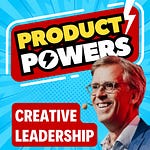Change is inevitable, whether it's in the workplace or in our personal lives. But navigating change is difficult—it’s messy, unpredictable, and often uncomfortable. So, how do we tackle it head-on?
This week I had the pleasure of speaking to Dr Tammy Watchorn, author of "The Change Ninja Handbook" and "The Change Ninja Returns." I have summarised our conversation in the following article which offers actionable insights and a new perspective for tech leaders.
For Tammy Watchorn, change isn’t just a process—it’s a mindset. And sometimes, it’s a battle.
After spending 17 years in the National Health Service (NHS), leading innovation projects that nobody seemed to want, she realized something crucial:
“The health service is incredibly hard to change. I failed an awful lot. But when I shifted my focus from process to people, everything changed.”
Tammy left the NHS and became The Change Ninja, using neuroscience, gamification, and humour to help individuals and organizations navigate transformation.
Her journey is proof that change isn’t just a workplace problem—it’s personal.
What You’ll Learn in This Article
📌 Why Change Fails (And Why "Change Fatigue" Is a Myth)
📌 The Power of Play: How Gamification Makes Change Easier
📌 Personal Change vs. Workplace Change: The Same But Different
📌 Tinderella & The Science of Uncertainty
📌 How to Handle Resistance in Change Workshops
📌 The Role of AI in Change: Help or Hindrance?
📌 Eliminating Workplace Time Wasters (And Why Your Inbox Doesn’t Matter)
Why Change Fails (And Why "Change Fatigue" Is a Myth)
Tammy has heard it all before:
➡️ “Our people are suffering from change fatigue.”
➡️ “There’s just too much change happening at once.”
➡️ “People don’t like change.”
Her response?
“Life is about change. It’s not ‘change fatigue’—it’s ‘change you don’t like’ that drains your energy.”
Change isn’t exhausting if it’s positive and aligned with what people want. It only becomes painful when it’s:
❌ Imposed without involvement
❌ A process-focused exercise instead of a people-focused transformation
❌ Implemented without addressing uncertainty and fear
Organisations need to stop throwing methodologies at problems and start understanding the human side of change.
Because if your change is constantly met with resistance, the problem isn’t the change—it’s the way you’re approaching it.
The Power of Play: How Gamification Makes Change Easier
When Tammy set out to write The Change Ninja Handbook, she didn’t want to create another dry textbook about transformation.
Instead, she built a Choose-Your-Own-Adventure book where readers gain or lose points based on the decisions they make.
“There are so many books on change management, but they’re hard to read, let alone implement. I wanted something fun.”
Gamification helps in change because:
✅ It engages people emotionally, not just logically
✅ It removes fear of failure by turning mistakes into learning opportunities
✅ It makes complex decisions easier to navigate
Her second book, The Change Ninja Returns, takes it even further—applying these same principles to personal change.
Because if these tools work in the workplace, they should work at home too.
Personal Change vs. Workplace Change: The Same But Different
Think about this:
At work, we carefully plan and strategise how to persuade colleagues to change.
At home, we just yell at our kids to take out the trash.
“You use persuasion skills at home to get your kids to do chores. Why don’t you apply the same skills to get your team to update a spreadsheet?”
Tammy’s insight? We already have the tools to drive change—we just don’t apply them consistently.
🟢 At work: We use methodologies, stakeholder alignment, and careful persuasion.
🔴 At home: We let emotions take over, leading to arguments and frustration.
If we swap these approaches—bringing more empathy into work and more strategic thinking into home life—we can get better outcomes in both.
Tinderella & The Science of Uncertainty
Tammy’s favourite chapter in The Change Ninja Returns is called Tinderella—a story about her brief, structured, and unexpectedly fun experiment with online dating.
“I approached it like a change project—defining what I wanted, staying open to possibilities, and making decisions based on logic, not just emotion.”
The neuroscience behind change shows that:
🧠 Our brains hate uncertainty. The moment we face something new, our brain searches for past experiences to predict an outcome.
🧠 If we don’t have past experience, our brain assumes the worst. That’s why public speaking, job interviews, and even dating can feel terrifying.
🧠 We can trick our brain by visualising success. Imagining a positive outcome builds fake experience, which helps override fear.
Tammy’s experiment with Tinder wasn’t just about dating—it was about hacking the uncertainty paralysis that stops people from making big changes.
Whether you’re switching careers, moving cities, or—yes—swiping right on a potential match, the process of overcoming fear is exactly the same.
How to Handle Resistance in Change Workshops
Have you ever facilitated a change workshop where:
❌ People clearly didn’t want to be there?
❌ The group resisted every exercise?
❌ The session felt like a waste of time?
Tammy once facilitated a session at Edinburgh Zoo (yes, a zoo), where everything fell apart on day one.
The solution? Scrap the agenda and put the problem back on the group.
🔹 Ask: “You’re all expensive professionals sitting in this room. What do you want to get out of today?”
🔹 Let them set the agenda, then facilitate around it.
🔹 Focus on alignment—not just running through a list of pre-planned exercises.
Because people won’t engage in change unless they feel a sense of ownership over it.
The Role of AI in Change: Help or Hindrance?
AI is changing how we work. But should it change what we do?
“Technology shouldn’t dictate how humans behave. We should use it to enhance, not replace, human skills.”
🔹 AI can speed up decision-making, but it can’t replace emotional intelligence and persuasion.
🔹 AI can scan medical images faster, but it still needs a human expert to make critical decisions.
🔹 AI can write LinkedIn posts, but it’s making content feel more diluted and less authentic.
Tammy’s advice? Use AI as a tool, not a crutch.
Eliminating Workplace Time Wasters (And Why Your Inbox Doesn’t Matter)
If Tammy could have one superpower, it would be:
“To eliminate all pointless, time-wasting tasks in the workplace.”
Here’s what she means:
🔹 Stop clearing your inbox. It’s digital clutter. No one cares.
🔹 Cancel unnecessary meetings. If you don’t need to be there, don’t go.
🔹 Cut self-imposed deadlines. Most of your stress is caused by yourself, not your boss.
🔹 Challenge KPIs that don’t matter. Counting “ideas generated” isn’t the same as creating real impact.
At the end of the day, if it doesn’t add value—why are you doing it?
Final Thoughts: Be The Change Ninja
Whether you’re leading change at work or making a major life transition, the rules are the same:
✅ Acknowledge resistance, but don’t let it stop you.
✅ Use gamification and play to make change easier.
✅ Apply workplace persuasion skills to home life (and vice versa).
✅ Understand that your brain’s fear of uncertainty is normal—and hack it.
Because change isn’t about process. It’s about people.
And if you can master that, you’ll truly be a Change Ninja.
Guest: Dr Tammy Watchorn
Dr Tammy Watchorn’s experiences of leading transformational change in complex highly resistant environments led to The Change Ninja Handbook, a choose-your-own-adventure guide to making change happen. As a teacher, trainer, facilitator and coach, she works at all levels within and across organizations with a strong focus on change management, neuroscience, behaviours and resistance to change, effective delivery and productivity.
Then one day, she unexpectedly encountered a huge life-changing situation, an emotional, overwhelming change project that she hadn’t asked for and didn’t want. She decided to use all of her resources, the tools and methods she taught others to use for change at work, to see if they worked just as well when the stakes were very high and very personal. She became her very own case study, and now she’s sharing the results so that you can Ninja your own life’s lemons into lemonade.
https://www.linkedin.com/in/tammywatchorn/
Book: The Change Ninja Return










